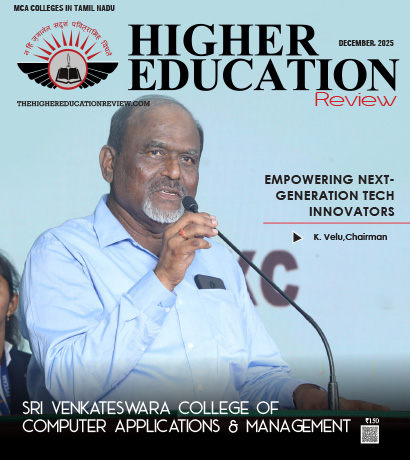Five Ways in which IoT is Transforming Higher Education
 The Internet of Things (IoT) has been a game-changer for a number of industries, and higher education is no exception. IoT devices and solutions are being used in a variety of ways to improve the efficacy of teaching and learning.
The Internet of Things (IoT) has been a game-changer for a number of industries, and higher education is no exception. IoT devices and solutions are being used in a variety of ways to improve the efficacy of teaching and learning.
In particular, IoT is having a transformational effect on the way data is collected and used in higher education institutions. Data collected by IoT devices can be used to improve everything from security to energy efficiency.
In this article, we will explore the top five ways in which IoT is transforming higher education. We will also discuss the advantages and disadvantages of using IoT in higher education.
The higher education sector is under pressure to do more with less. Struggling to maintain quality in the face of budget cuts, many institutions are turning to technology for help. The internet of things (IoT) is one of the most talked-about technologies in this space, and for good reason. Here are the top five ways IoT is transforming higher education.
Student Engagement
IoT devices are being used to engage students in a variety of ways. For example, sensors can be used to track how often students are attending class, what time they are arriving, and how long they are staying. This data can then be used to improve attendance and engagement. Additionally, IoT solutions are being used to create interactive learning experiences. For example, “smart” whiteboards can be used to create a more interactive and engaging learning environment.
Campus Infrastructure
IoT devices are also being used to improve the infrastructure of campuses. For example, sensors can be used to monitor the condition of buildings and identify maintenance issues before they become expensive problems. Additionally, IoT solutions are being used to improve the efficiency of heating and cooling systems, as well as lighting systems. By making campuses more efficient, institutions can save money and resources.
Enhancing Safety
One of the most important ways IoT is being used in higher education is to enhance safety. For example, IoT devices can be used to track the location of students and faculty. Additionally, IoT solutions are being used to create virtual “safe spaces” for students who feel threatened or in danger. Additionally, some campuses are using IoT solutions to prevent accidents. By enhancing safety, institutions can create a more positive and productive learning environment.
Universities are also leveraging IoT technology for increased security and safety measures on campus. By connecting cameras and motion sensors throughout campuses, universities can monitor areas with low visibility or high traffic flow more easily than before. This allows security teams to respond quickly if an incident occurs on campus or if a suspicious activity is detected.
Reducing Costs
IoT solutions are also being used to reduce the costs associated with higher education. For example, by using data collected by IoT devices, institutions can identify areas where they are wasting resources. Additionally, IoT solutions are being used to automate administrative tasks, such as grading and class scheduling. By reducing costs, institutions can invest more money in things like scholarships and research.
Through implementing smart systems that automatically adjust lighting or HVAC settings based on occupancy levels, universities can drastically reduce their electricity costs while also increasing efficiency and productivity. Additionally, predictive analytics tools used with connected equipment can detect malfunctions before they happen and prevent costly downtime due to maintenance issues or other unexpected events.
‘’One of the most fascinating trends today is the emergence of the low-cost micro controllers that are sufficiently powerful to connect to the internet. They are the key to the Internet of Things, where all kinds of devices become the internet’s interface to the physical world,” says Uttam Kumar, Head - IT Innovations & New Technology Aircel’’
Why Big Data Matters
IoT solutions generate a lot of data. This data can be used to improve the efficacy of higher education in a number of ways. For example, data collected by IoT devices can be used to improve the student experience. Additionally, data can be used to improve the safety of campuses. Finally, data can be used to reduce the costs associated with higher education.
IoT solutions provide educational institutions with large amounts of invaluable data which can then be leveraged in order to improve the student experience and create greater efficiencies throughout the institution. Big Data analysis provides valuable insight which schools need to take advantage of if they want to remain competitive in the modern educational landscape.
To Conclude
The future will be powered by the IoT. It will transform the entire education industry, from the classroom to the boardroom. And, we will all be able to participate in it. Thing to note is that IoT isn't just a technology. IoT, as a concept has been around for over a century and a half. Which IoT is changing the world of education and the ways we can leverage IoT technology in education today.

